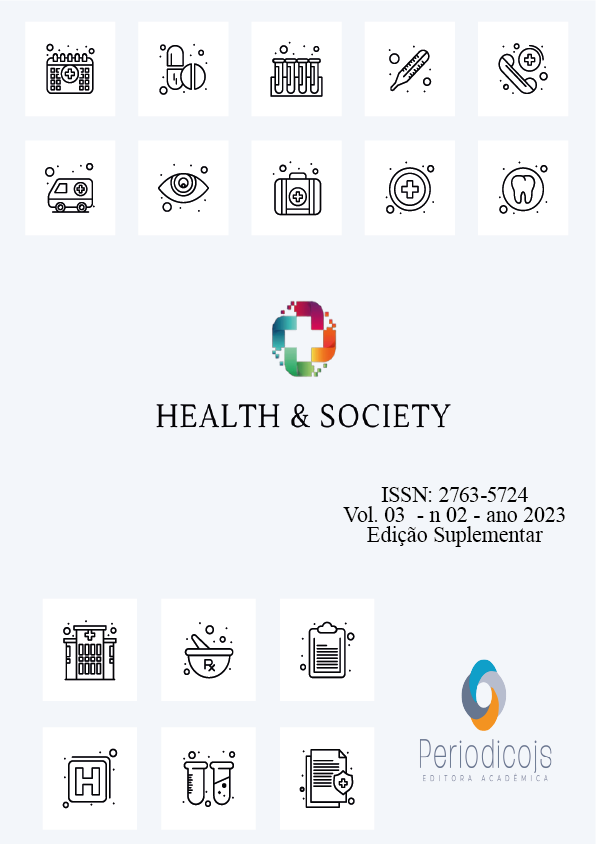Resumo
Introduction: Childbirth is considered a painful experience for women, since, during the uterine contraction phases, pain can be felt at different stages and can arise from many different places. Pain happens at the beginning of uterine contractions, gradually increasing and lasting longer. When contractions happen more frequently, pain may arise within 3 to 5 minutes. In view of this, humanization in the obstetric sector stands out as one of the main recommendations imposed by the Ministry of Health, in order to provide adequate follow-up under dignified conditions for the patient. In view of this, this research will address alternative treatment options that can help minimize pain during labor. Objective: To show, through the scientific literature, the main recommendations for pain relief during labor. Methodology: This research was carried out through an integrative literature review, with an exploratory approach, whose institute was summarized in investigating, through already published articles, relevant information that answered the guiding question. The searches took place in the scientific databases: LILACS, SCIELO and MEDLINE. Results and Discussion: Thus, the results show that, before resorting to analgesia, for pain relief, it is important to opt for the use of non-pharmacological alternative methods, natural sources that are not drugs, can be used to relieve pain. of childbirth. There are several techniques to reduce women’s suffering by working with their psycho-emotional and spiritual aspects. Allied to this, childbirth education reduces women’s anxiety, allows for a more positive attitude during labor, increases women’s satisfaction with childbirth, reduces the need for anesthesia, increases the likelihood of vaginal delivery, and increases chances of having a difficult birth. bringing parents and babies together and bringing a sense of accomplishment during childbirth. birthday. Conclusion: Through data collection, it can be seen the need to expand research on the subject, disseminate information about its effectiveness and benefits to professionals who provide obstetric services, encourage the introduction of non-pharmacological methods in clinical practice by professionals of health and encourage institutions to support midwifery services and disseminate information on how to incorporate this practice into their routine.
Referências
ALVES, Taynara Cassimiro et al. Contribuições da enfermagem obstétrica para as boas práticas no trabalho de parto e parto vaginal. Enfermagem em Foco, v. 10, n. 4, 2019.
CORRÊA, Luísa Bottoni. O uso de aromaterapia e acupressão para redução da dor durante o trabalho de parto: uma revisão de escopo. Revista Remecs.2022.
CASTRO, Antonia Tainá Bezerra et al. Diagnóstico de enfermagem “dor” no parto: reflexões sobre as boas práticas. Revista Remecs-Revista Multidisciplinar de Estudos Científicos em Saúde, p. 27-27, 2022.
CAVALCANTI, Ana Carolina Varandas et al. Terapias complementares no trabalho de parto: ensaio clínico randomizado. Revista gaúcha de enfermagem, v. 40, 2019.
DANTAS, Anne Caroline; BOMFIM, Larissa Raiane Souza; DA PAIXÃO FREITAS, Zaira Moura. O uso da hidroterapia, deambulação e massagem lombossacral como métodos não farmacológicos utilizados para o alívio da dor, no trabalho de parto e parto. Research, Society and Development, v. 11, n. 17, p. e241111738744-e241111738744, 2022.
FONTE, Regiane Maria et al. Uso de métodos alternativos para alívio da dor no parto normal. In: Congresso Brasileiro de Ciências e Saberes Multidisciplinares. 2022. p. 1-8.
KLEIN, Bruna Euzebio; GOUVEIA, Helga Geremias. Utilização de métodos não farmacológicos para alívio da dor no trabalho de parto. Cogitare Enfermagem, v. 27, 2022.
MONTEIRO, ANA CECÍLIA FERREIRA et al. Técnicas que aliviam a dor durante o trabalho de parto. REVISTA SAÚDE MULTIDISCIPLINAR, v. 12, n. 2, 2022.
MACÊDO, Amanda Rayla dos Santos. Benefícios das práticas integrativas e complementares em saúde no alívio da dor no trabalho de parto. Trabalho de Conclusão de Curso. Universidade Federal do Rio Grande do Norte. 2022.
OLIVEIRA, Leiliane Sabino et al. Uso de medidas não farmacológicas para alívio da dor no trabalho de parto normal. Brazilian journal of health review, v. 3, n. 2, p. 2850-2869, 2020.
SILVA, Adriele Dantas; DA CUNHA, Eryca Alencar; ARAÚJO, Raquel Vilanova. Os benefícios das práticas integrativas e complementares no trabalho de parto. Research, Society and Development, v. 9, n. 7, p. e614974468-e614974468, 2020.
SILVA, Maria Andréia et al.Aromaterapia para alívio da dor durante o trabalho de parto. Journal of Nursing UFPE/Revista de Enfermagem UFPE, v. 13, n. 2, 2019.
SIQUEIRA, Fernanda Agner; DA SILVA, Rafaela Sterza; ZANI, Adriana Valongo. Percepção dos profissionais de saúde frente à musicoterapia para criança elegível para cuidados paliativos: revisão integrativa. Brazilian Journal of Development, v. 8, n. 2, p. 10093-10103, 2022.
SOARES, Maria Victoria et al. Tratamentos não farmacológicos para alívio da dor na assistência ao parto humanizado. Research, Society and Development, v. 11, n. 16, p. e409111638361-e409111638361, 2022.
TRIGUEIRO, Tatiane Herreira et al. Métodos não farmacológicos para alívio da dor no trabalho de parto: oficinas para Enfermagem. Revista Família, Ciclos de Vida e Saúde no Contexto Social, v. 9, n. 2, p. 779-785, 2021.

Este trabalho está licenciado sob uma licença Creative Commons Attribution 4.0 International License.
Copyright (c) 2023 Cicera Eduarda Almeida de Souza, Patrícia Cavalcante de Sá Florêncio, Julio Cesar Pereira da Silva, Leticia Melo Moreira, Regineide Guiomar da Silva, Nathalia Lima da Silva, Isabel Comassetto, Andreia Silva Ferreira, André Luiz Fidelis de Lima





